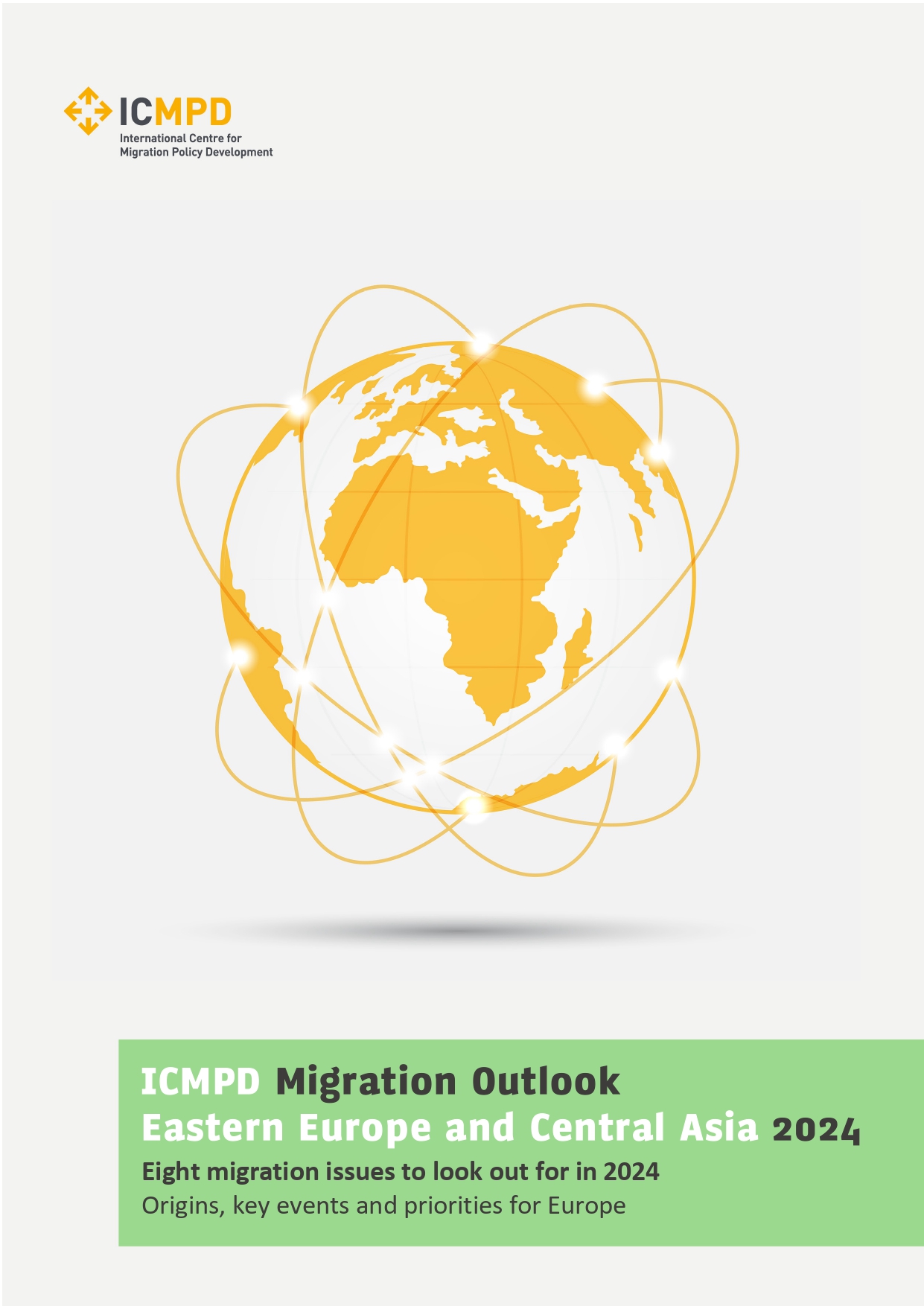The Regional Migration Outlook for Eastern Europe and Central Asia (EECA) presents an analysis of the key events and trends that shaped migration in the EECA region in 2023. Simultaneously, it offers a cautious outlook into areas and issues that may affect migration and mobility to, within and from EECA in 2024. In a non-exhaustive way, the publication addresses developments in the twelve EECA countries (based on ICMPD’s regional division) – Armenia, Azerbaijan, Belarus, Georgia, Kazakhstan, Kyrgyzstan, Moldova, Russia, Tajikistan, Turkmenistan, Ukraine, and Uzbekistan. The analysis is based on ICMPD’s regional expertise and desk research from official and public data sources.
In retrospect, the developments for migration in last year’s EECA Outlook were correctly anticipated. Since the beginning of Russia’s war of aggression against Ukraine, large-scale conflict-induced displacement as well ongoing economic-induced migration, prevalent in the region since the end of the ‘Soviet marriage’, are the defining features of the EECA region with respect to migration. The war in Ukraine continues to affect the lives of millions of Ukrainians displaced internally and across international borders as well as the populations hosting them, which see their integration as progressively important. Integration debates are fraught with complexity, as they underscore both benefits for hosting states and losses for Ukraine. Additionally, the war's impact has reverberated throughout the region, yielding unexpected economic gains from an influx of Russian emigrants along with their financial and human capital, while also evoking memories of past Russian and Soviet influences. While receiving societies – particularly in Armenia, Georgia, Kyrgyzstan, and Kazakhstan – have responded differently to Russian inflows, most governments have abstained from any major interventions. The longstanding pattern of labour migration, with Russia as a primary destination for regional – more recently Central Asian – migrants, continues to gradually shift as more individuals from the EECA region seek opportunities elsewhere. The EU, on the other hand, is attracting more of the EECA labour force, the war in Ukraine notwithstanding. Potential point of anticipated friction in other regional hotspots have also materialised, exemplified by Azerbaijan's military intervention in the Karabakh region, displacing over 100,000 Armenians who had inhabited the area. At the same time, the political situation in Central Asia remained calm, and even saw signs of regional approximation.
Please access the Outlook in English here to learn about the eight migration issues to look out for in 2024.

